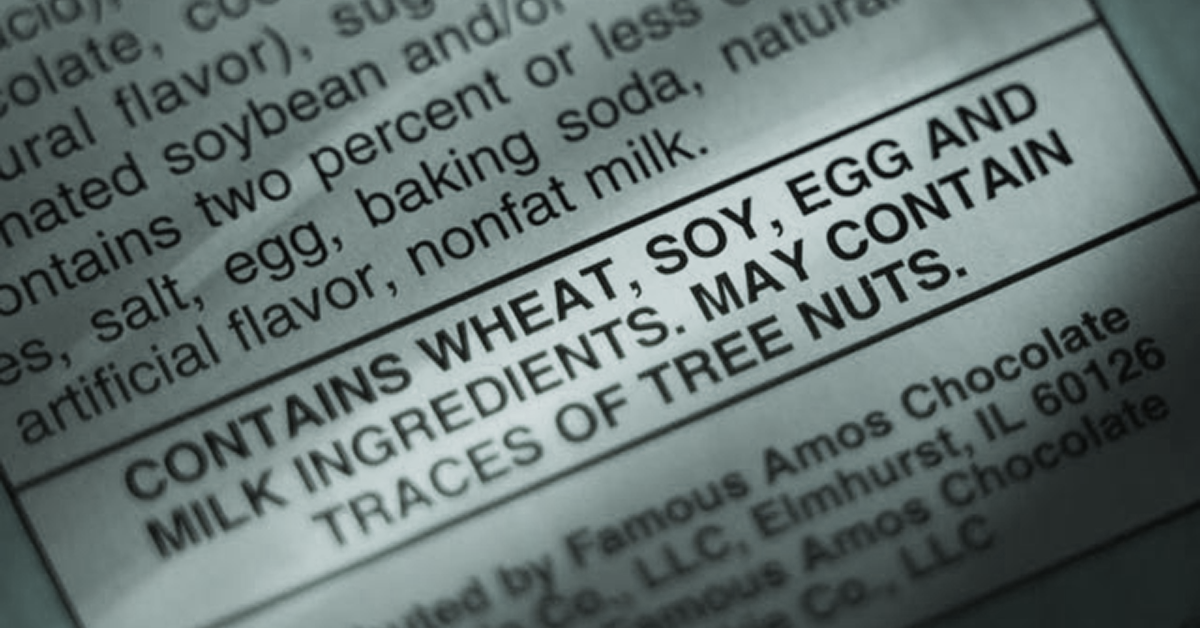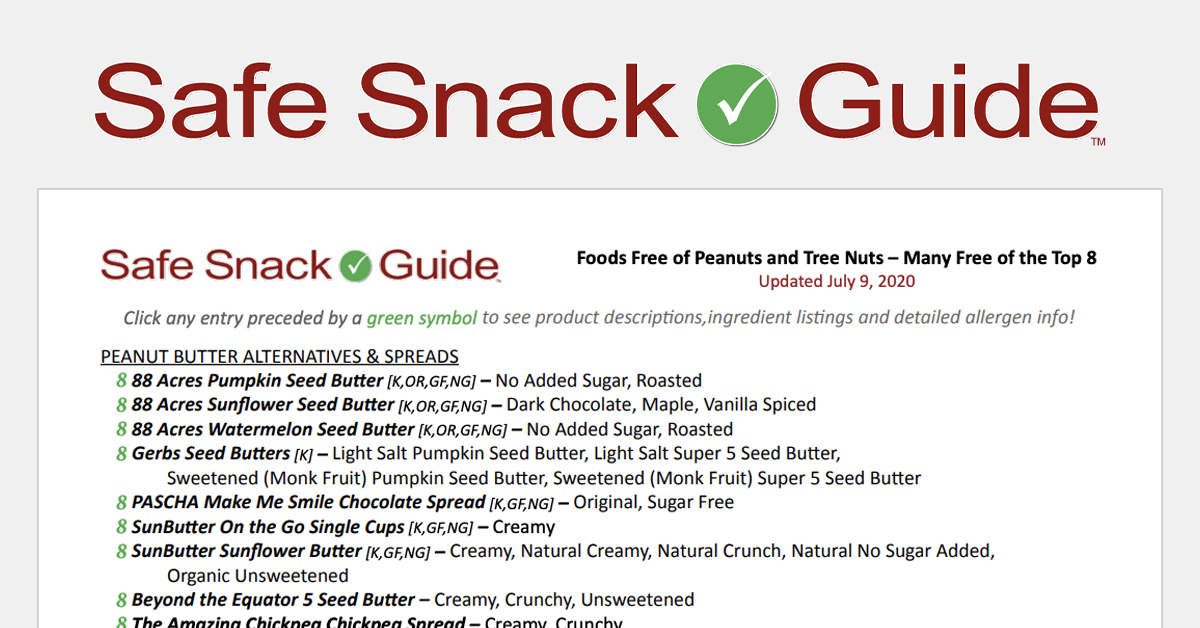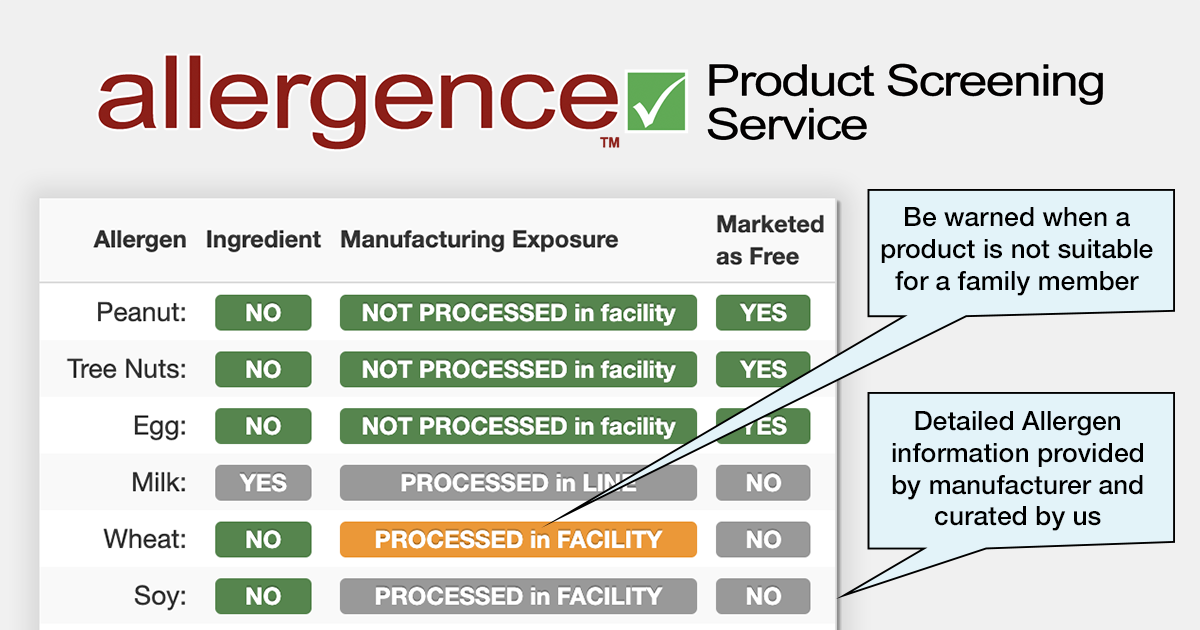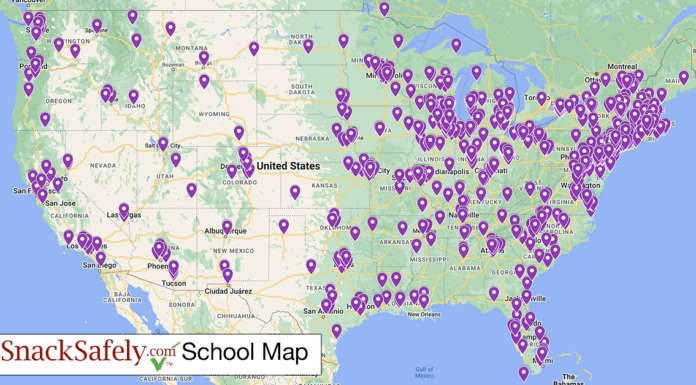4 – Extend the recognized “Top” allergens based on updated, continually monitored criteria
The Top 8 allergens defined by FALCPA constituted the foods that 90% of the allergic community were allergic to in 2004. The incidence of food allergy has since skyrocketed and allergies to many more foods have become prevalent since.
Other countries have much broader lists of top allergens that must be disclosed separately. For example, the European Union identifies 14 top allergens including sesame, mustard, lupin, mollusks, and sulfur dioxide/sulfites not required under US labeling regulations.
The FDA should extend the FALCPA Top 9 based on continually updated criteria. That criteria should extend the requirement to cover a higher percentage of allergens beyond the 90% threshold and be updated on a periodic basis.
The changes outlined above would eliminate much of the ambiguity that plagues the allergic community today. The majority of those with food allergies would be able to look at the Contains and Top Allergens Processed statements and determine whether the product is appropriate for their consumption. Those allergic to less common foods would be able to rely on the ingredient list without having to worry about whether their allergen of concern is hidden under a category such as “spices”.
The changes would also be a boon to people with food sensitivities and those that follow other restrictive diets by disclosing a much broader array of ingredients.
Have ideas for changes you would like to see? Sound off below in the comments section. We hope to collect the best submissions and publish them in an open letter to the FDA.
- Facts and Statistics — FARE
- Food Allergen Labeling and Consumer Protection Act of 2004 (FALCPA) — US Food & Drug Administration
- H. R. 2117 (FASTER Act) — Congress.gov







How about including “Gluten” in the list? I have celiac disease, and while it is not an allergy, consumption of gluten causes me to be sick, miss several days to a week of work, and not recover completely for at least a few weeks. Damage also occurs to my small intestine. It is not only wheat that does this — rye, triticale, etc., and flavorings, colorings, and other substances added to food, seasonings, dressings, etc., needs to be disclosed.
Thanks
What is the FDA doing for the community of people that have Alpha Gal? There is mammalian byproducts in so many things. It is hidden ingredients and the food companies don’t have to put anything in the label. If I were to eat a bag is salted peanuts, I would be in the hospital, right after I used my EpiPen, because the soultion the nuts are put in to keep the salt attached has mammalian byproducts in it. The same goes for McDonald’s french fries.
I believe we the consumer have the right to know everything that goes into our food.
Everyone should leave a comment on the FDA docket for this “DRAFT”. It is not final yet. we have 60 days once the comment period opens.
I do not agree with the agenda of mandating the “Processed in same facility as…” This has the potential to blow up in our faces as consumers looking for clear and honest labeling. Same facility means very little without clear definition. Let’s start first with clear definitions of “Contains” “May Contain” and “Same Facility.”
By calling numerous food manufactures to clarify their labeling one learns the wide variety of what a manufacturer consider same facility. It is much too vague. Please stop suggesting this approach until we get the FDA to define those label warnings properly.
Companies should have to specify WHICH nuts are under the term “tree nuts”. It should not be an all encompassing term just like “spices”.
I second this.
It seems most manufactures take the easy way out and put “may contain”
Just to cover themselves. I think it should read “contains” in other words yes or no.
I know this seems extreme but companies that refuse to give specific line and production information should be held accountable. If I call and ask you if my food is produced on a line that also processes hazelnuts or shrimp you should be able to tell me. I always say to them, if I told you there was glass or metal bits found in my food. Would you be able to tell me exactly which products needed to be recalled that were processed on that line? They always pause and don’t say anything. Because I know the answer, it’s yes. Same thing. They should be forced to tell everything that’s processed on a line and very specifically.
I’m assuming the reason companies do not want to label allergens appropriately is because of money? Is it the cost of changing all the labels on all of their food products? Or the cost of testing everything? I wonder how that balances out against the cost of lawsuits brought on by allergy sufferers or the families of those who have died after eating a product that is not labeled appropriately? Why can’t companies just be honest? It’s a terrible state of our society when it is run by such greed. I hate to wish ill-will, but I sometimes wish that every single one of those people in charge of labeling allergens had to see what it was like before making these simple decisions. I wish they had to watch their child struggle to breathe. I wish they had to experience their own difficulty in breathing and the feeling of your throat closing after eating an falsely labeled food product. I wish they had feel the sting of the cost of purchasing epi-pens, inhalers, and antihistamines that 90% of the time expire before ever being used (thankfully!)… (also talking to you, big Pharma). I wish they had to experience the jab of an epi-pen and the terrible burning pain caused by the medication, and still having to hold the pen in place and tolerate the pain so the life-saving medication can be fully received. Better yet, I wish they had to experience the heartbreak of having to hold their toddlers down while injecting them with epinephrine to save their life and to avoid them harming themselves. I wish they had to feel the fear that something they eat could kill them. I wonder if the cost of simply labeling food products safely and appropriately wouldn’t seem so high? It’s the Golden Rule. Do unto others as you would have them do to you. And that’s not even from a religious standpoint (althought the Bible does teach that). It’s from a simple human-being, being kind to one another standpoint. Is it really that hard to just DO THE RIGHT THING?! So sad that this conversation even has to happen. Ridiculous.